Aerodynamic Analysis and Noise-Reducing Design of an Outside Rear View Mirror
Abstract
:1. Introduction
2. Design and Analysis
2.1. 3D Modeling and Geometry of OSRVM
2.2. Boundary Conditions and Analysis
3. Simulation Results
3.1. Aerodynamic Simulation of the Reference OSRVM Model
3.2. Analysis of the Second Model with Outer Duct
3.3. Analysis of the Third Model with Inner Duct
3.4. Result Comparisons and Discussions
4. Conclusions
Acknowledgments
Author Contributions
Conflicts of Interest
References
- Cerrato, G. Automotive sound quality—Powertrain, road and wind noise. Sound Vib. 2007, 43, 16–24. [Google Scholar]
- Jaitlee, R.; Alam, F.; Watkins, S. Pressure Fluctuations on Automotive Rear View Mirrors; SAE Paper 2007-01-0899, SP-2066; Society of Automotive Engineers: Warrendale, PA, USA, 2007. [Google Scholar]
- Alam, F.; Jaitlee, R.; Watkins, S. Aerodynamic Effects on an Automotive Rear Side View Mirror. In Proceedings of the 16th Australasian Fluid Mechanics Conference, Gold Coast, Australia, 3–7 December 2007; pp. 762–765. [Google Scholar]
- Lounsberry, T.H.; Gleason, M.E.; Puskarz, M.M. Laminar Flow Whistle on a Vehicle Side Mirror; SAE Paper, 2007-01-1549; Society of Automotive Engineers: Warrendale, PA, USA, 2007. [Google Scholar]
- Watkins, S.; Oswald, G. The flow field of automobile add-ons-with particular reference to the vibration of external mirrors. J. Wind Eng. Ind. Aerodyn. 1999, 82, 541–554. [Google Scholar] [CrossRef]
- Kim, J.-H.; Han, Y.O.; Lee, M.H.; Hwang, I.H.; Jung, U.H. Surface flow and wake structure of a rear view mirror of the passenger car. In Proceedings of the Bluff Bodies Aerodynamics & Applications (BBAA) VI, Milan, Italy, 20–24 July 2008. [Google Scholar]
- Kim, J.-H.; Han, Y.O. Experimental investigation of wake structure around an external rear view mirror of a passenger car. J. Wind Eng. Ind. Aerodyn. 2011, 99, 1197–1206. [Google Scholar] [CrossRef]
- Ask, J.; Davidson, L. A numerical investigation of the flow past a generic side mirror and its impact on sound generation. J. Fluids Eng. 2009, 131, 061102. [Google Scholar] [CrossRef]
- Ono, K.; Himeno, R.; Fukushima, T. Prediction of wind noise radiated from passenger cars and its evaluation based on auralization. J. Wind Eng. Ind. Aerodyn. 1999, 81, 403–419. [Google Scholar] [CrossRef]
- Murad, N.; Nase, J.; Alam, F.; Watkins, S. Computational fluid dynamics study of vehicle A-pillar aero-acoustics. Appl. Acoust. 2013, 74, 882–896. [Google Scholar] [CrossRef]
- Frank, H.M.; Munz, C.-D. Direct aeroacoustics simulation of acoustic feedback phenomena on a side-view mirror. J. Sound Vib. 2016, 371, 132–149. [Google Scholar] [CrossRef]
- Werner, M.J.; Wurz, W.; Kramer, E. Experimental investigation of an aeroacoustics feedback mechanism on a two-dimensional side mirror model. J. Sound Vib. 2017, 387, 79–95. [Google Scholar] [CrossRef]
- Grahs, T.; Othmer, C. Evaluation of Aerodynamic Noise Generation: Rarameter Study of a Generic Side Mirror Evaluating the Aeroacoustic Source Strength. In Proceedings of the European Conference on Computational Fluid Dynamics, Egmond aan Zee, The Netherlands, 5–8 September 2006. [Google Scholar]
- Viswanath, P.R. Aircraft viscous drag reduction using riblets. Prog. Aerosp. Sci. 2002, 38, 571–600. [Google Scholar] [CrossRef]
- Zastawny, M. Numerical simulation of wing vortex generators—Methodologies and validation. Aeronaut. J. 2016, 120, 627–650. [Google Scholar] [CrossRef]
- Olsson, M. Designing and Optimizing Side-View Mirrors; Dept. of Applied Mechanics, Chalmers University of Technology: Gothenburg, Sweden, 2011. [Google Scholar]
- Wang, Y.; Gu, A.; Li, W.; Lin, L. Evaluation of aerodynamic noise generation by a generic side mirror. Int. J. Mech. Aerosp. Ind. Mechatron. Manuf. Eng. 2010, 4, 120–127. [Google Scholar]
- ANSYS, INC. ANSYS Fluent User’s Guide; ANSYS, INC.: Canonsburg, PA, USA, 2016. [Google Scholar]

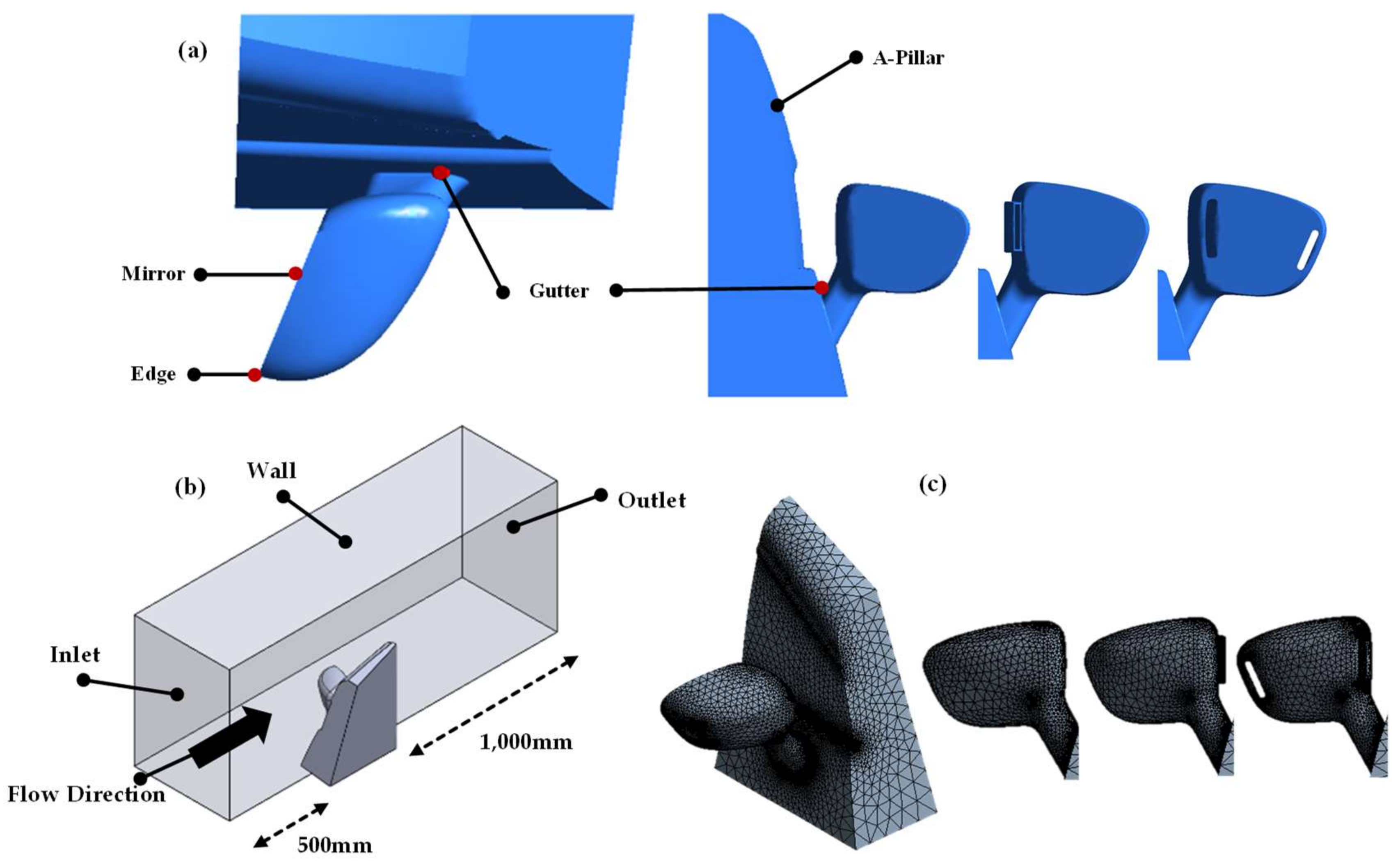

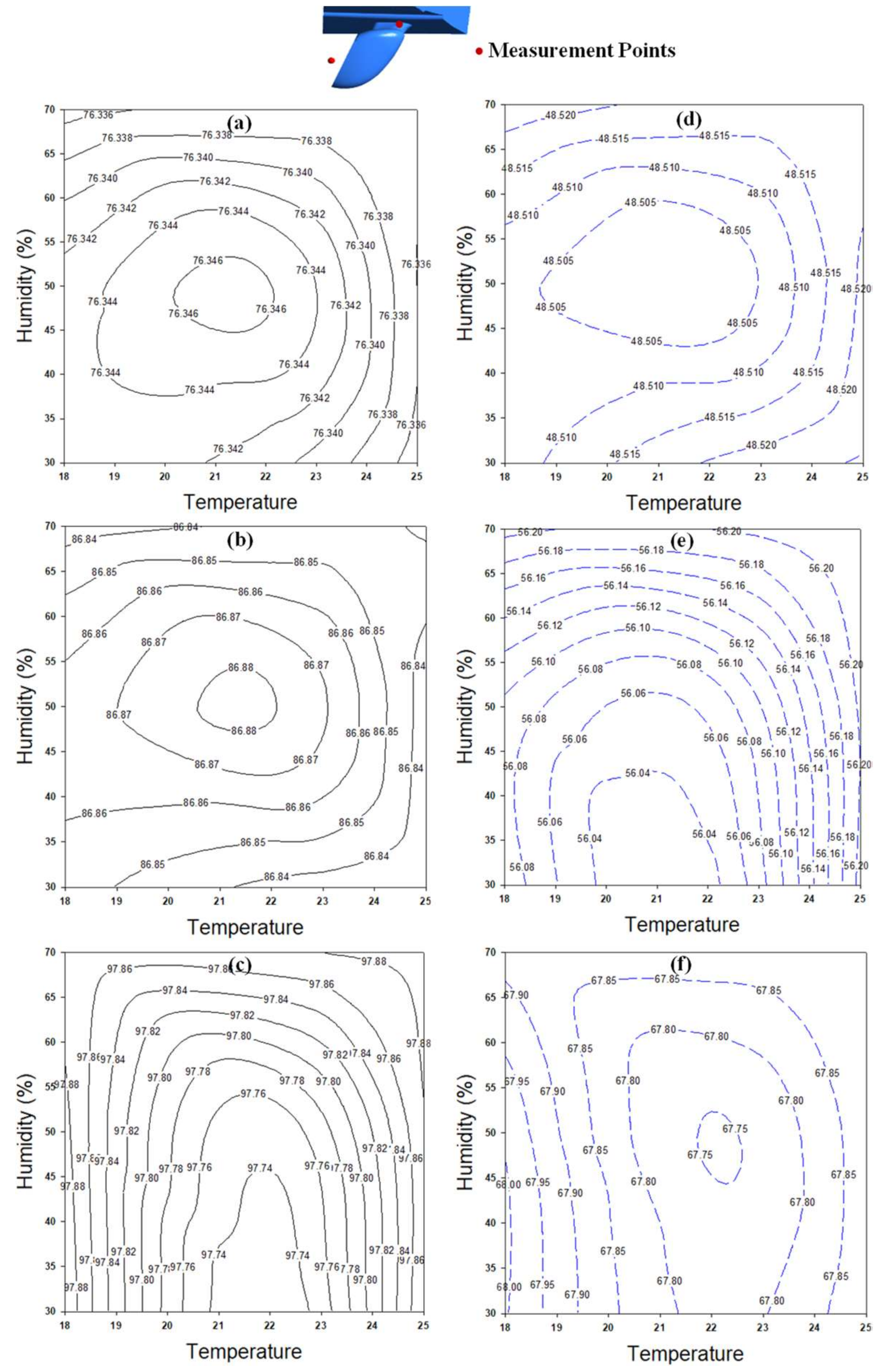
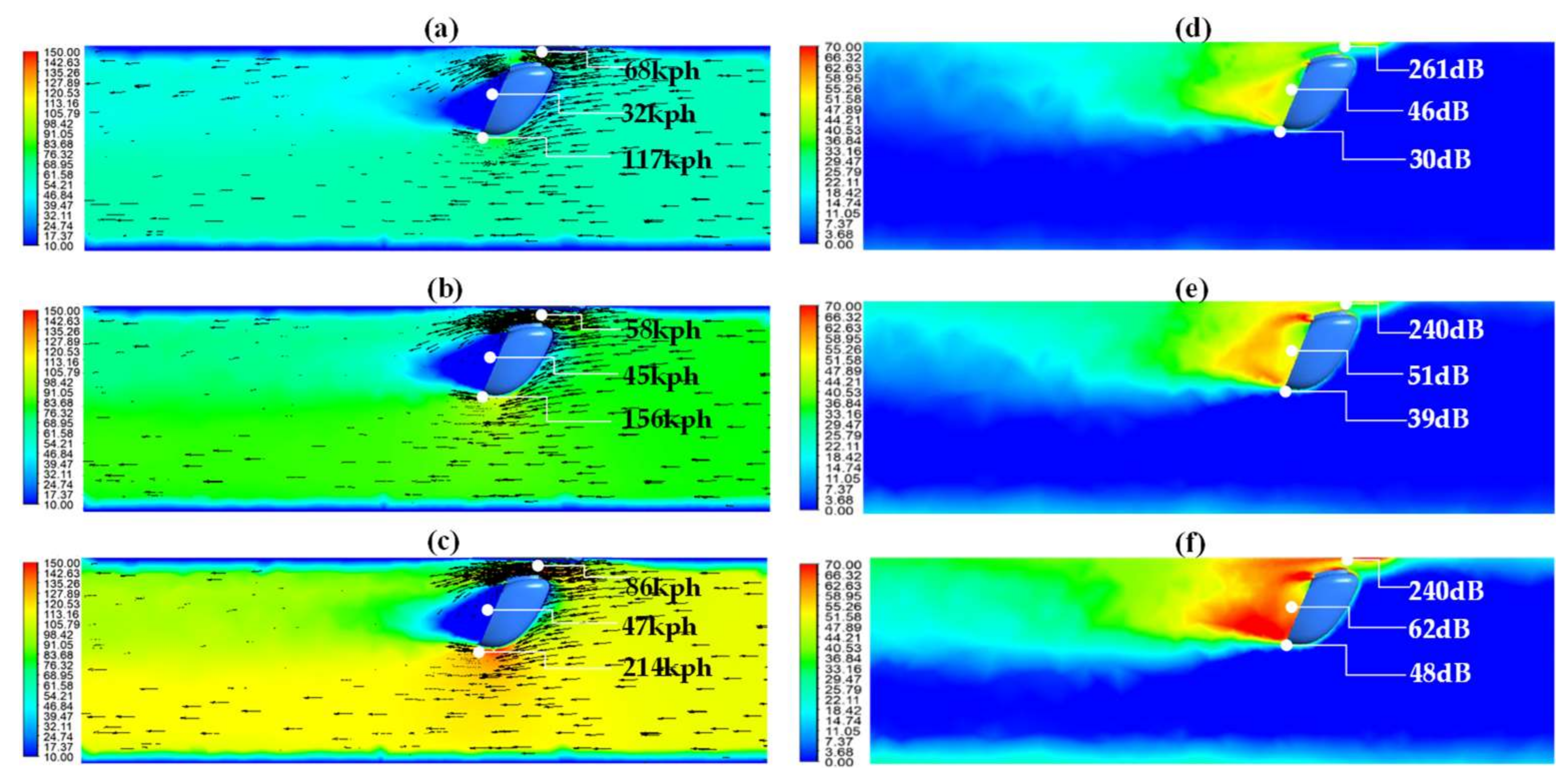
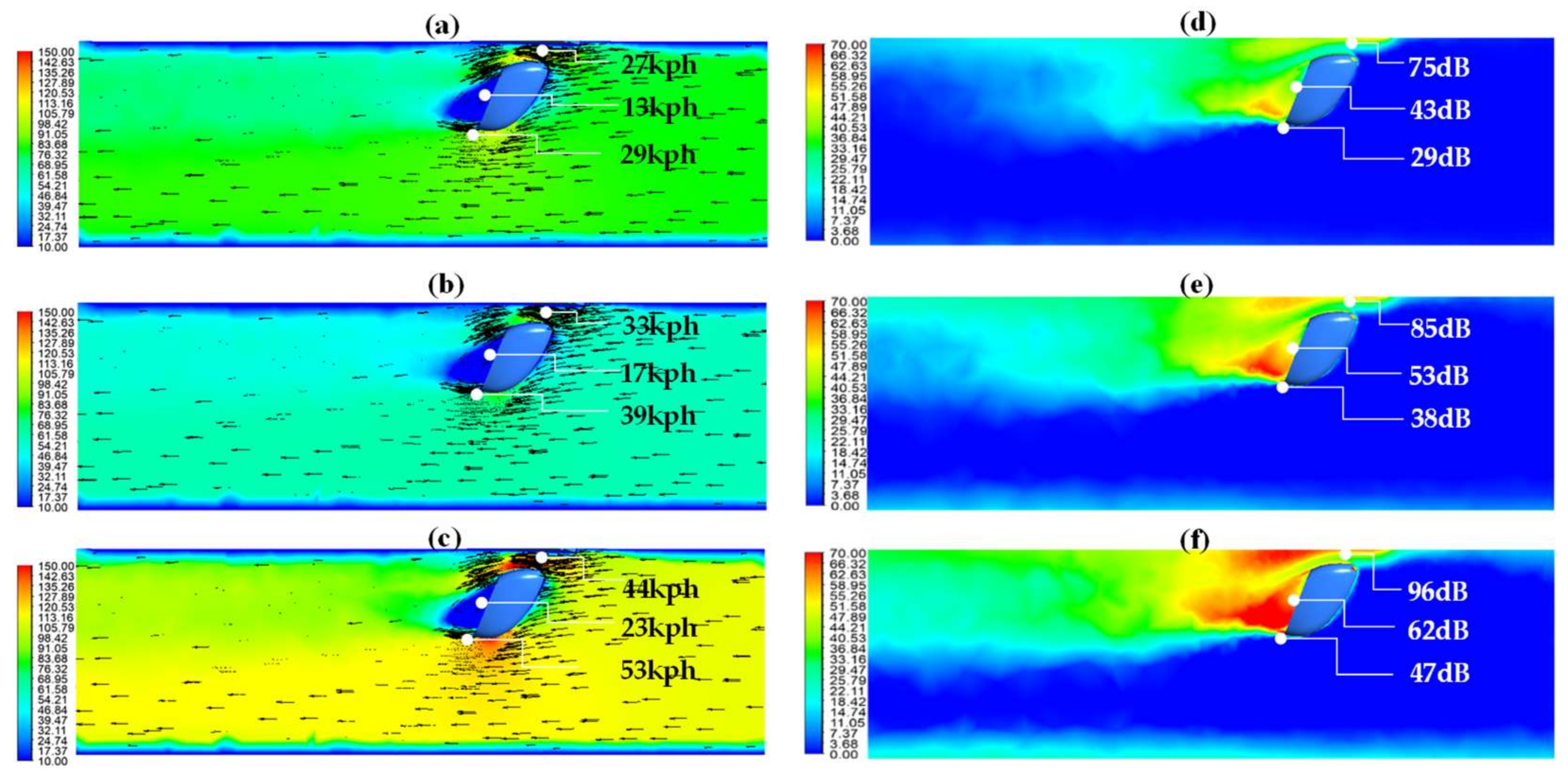
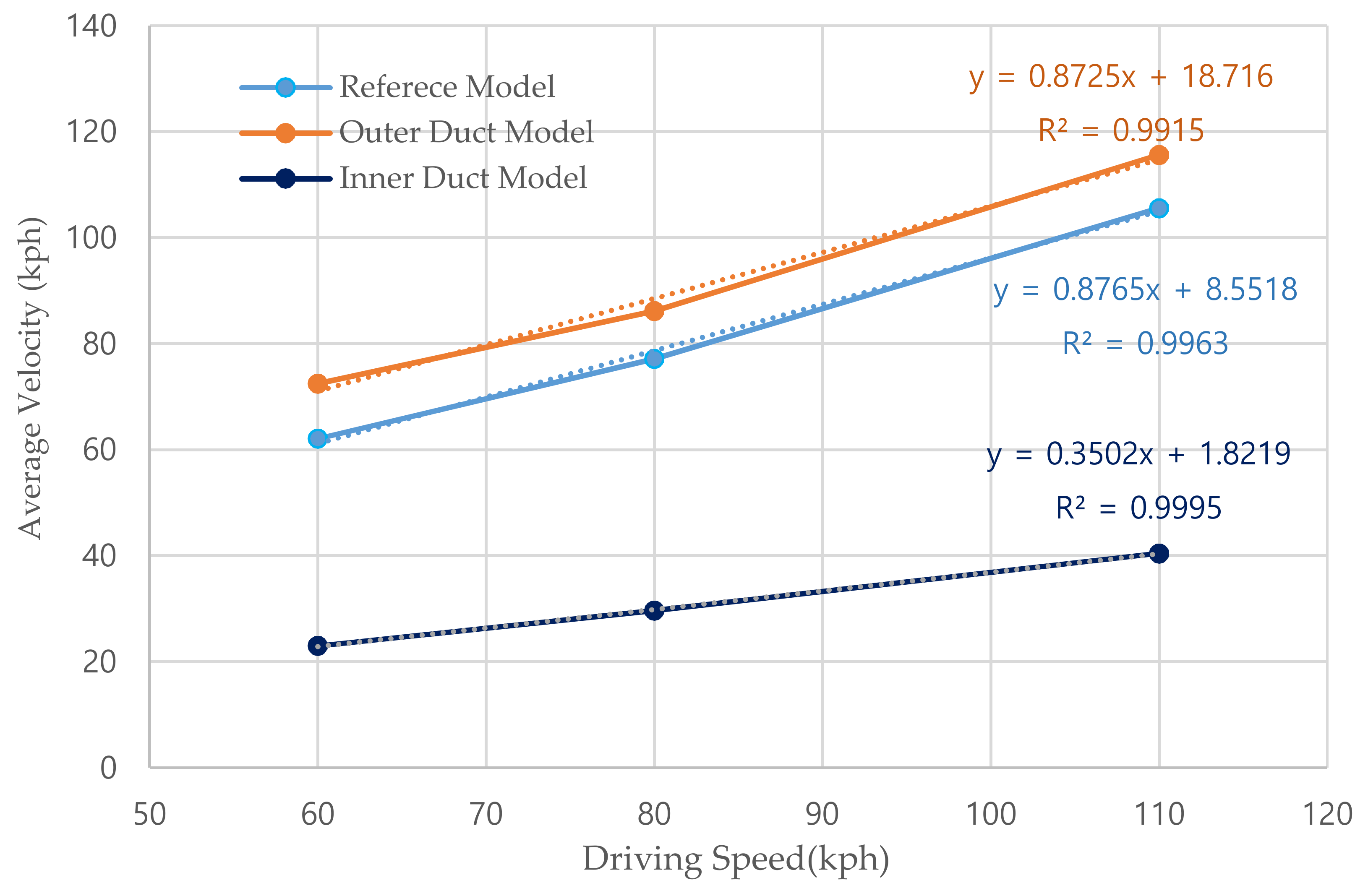
| Vehicle Speed (kph) | 60 (Urban or City) | 80 (Highway) | 110 (Freeway) |
| Temperature (°C) | 18 | 23 | 25 |
| Relative Humidity (%) | 30 | 50 | 70 |
| Type | Vehicle Speed (kph) | Measure Points | Average (kph) | Difference (Edge − Gutter) | ||
|---|---|---|---|---|---|---|
| Gutter (kph) | Mirror (kph) | Edge (kph) | ||||
| Reference Model | 60 | 54 | 31 | 102 | 62.3 | 48 |
| 80 | 54 | 43 | 135 | 77.3 | 81 | |
| 110 | 73 | 59 | 184 | 105.3 | 111 | |
| Outer Duct Model | 60 | 68 | 32 | 117 | 72.3 | 49 |
| 80 | 58 | 45 | 156 | 86.3 | 98 | |
| 110 | 86 | 47 | 214 | 115.7 | 128 | |
| Inner Duct Model | 60 | 27 | 13 | 29 | 23.0 | 2 |
| 80 | 33 | 17 | 39 | 29.7 | 6 | |
| 110 | 44 | 23 | 53 | 40.0 | 9 | |
| Type | Vehicle Speed (kph) | Vorticity: Measure Points | (A − B)/A (%) | ||
|---|---|---|---|---|---|
| A: Gutter (1/s) | B: Edge (1/s) | A − B | |||
| Reference Model | 60 | 689 | 241 | 448 | 65.0 |
| 80 | 664 | 242 | 422 | 63.6 | |
| 110 | 906 | 326 | 579 | 64.0 | |
| Outer Duct Model | 60 | 629 | 274 | 355 | 56.4 |
| 80 | 472 | 207 | 264 | 56.1 | |
| 110 | 784 | 343 | 440 | 56.3 | |
| Inner Duct Model | 60 | 251 | 287 | −37 | −14.3 |
| 80 | 347 | 375 | −28 | −8.1 | |
| 110 | 454 | 553 | −99 | −21.8 | |
© 2018 by the authors. Licensee MDPI, Basel, Switzerland. This article is an open access article distributed under the terms and conditions of the Creative Commons Attribution (CC BY) license (http://creativecommons.org/licenses/by/4.0/).
Share and Cite
Chu, Y.-J.; Shin, Y.-S.; Lee, S.-Y. Aerodynamic Analysis and Noise-Reducing Design of an Outside Rear View Mirror. Appl. Sci. 2018, 8, 519. https://doi.org/10.3390/app8040519
Chu Y-J, Shin Y-S, Lee S-Y. Aerodynamic Analysis and Noise-Reducing Design of an Outside Rear View Mirror. Applied Sciences. 2018; 8(4):519. https://doi.org/10.3390/app8040519
Chicago/Turabian StyleChu, Yong-Ju, Yong-Sang Shin, and Seung-Yop Lee. 2018. "Aerodynamic Analysis and Noise-Reducing Design of an Outside Rear View Mirror" Applied Sciences 8, no. 4: 519. https://doi.org/10.3390/app8040519




